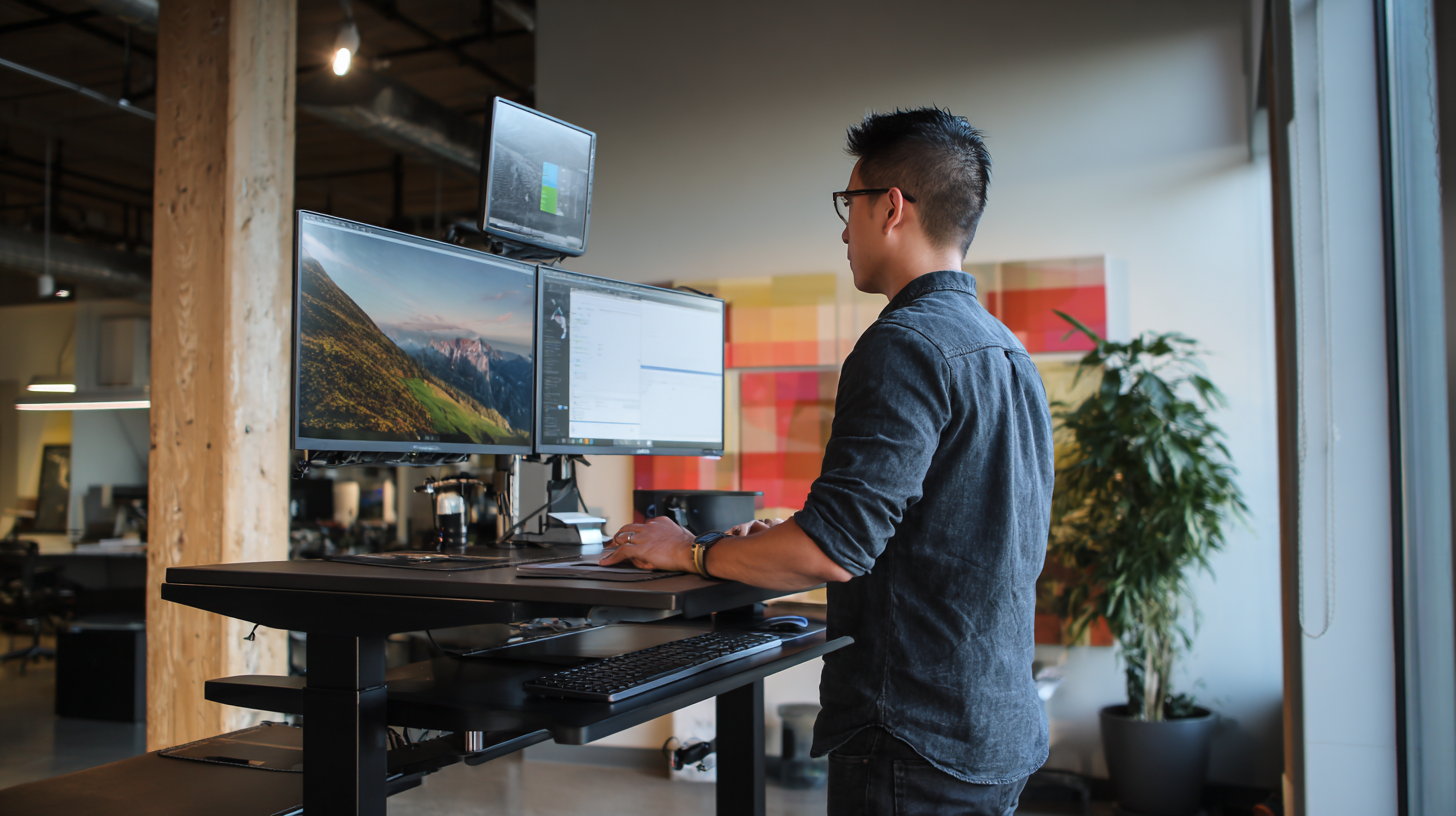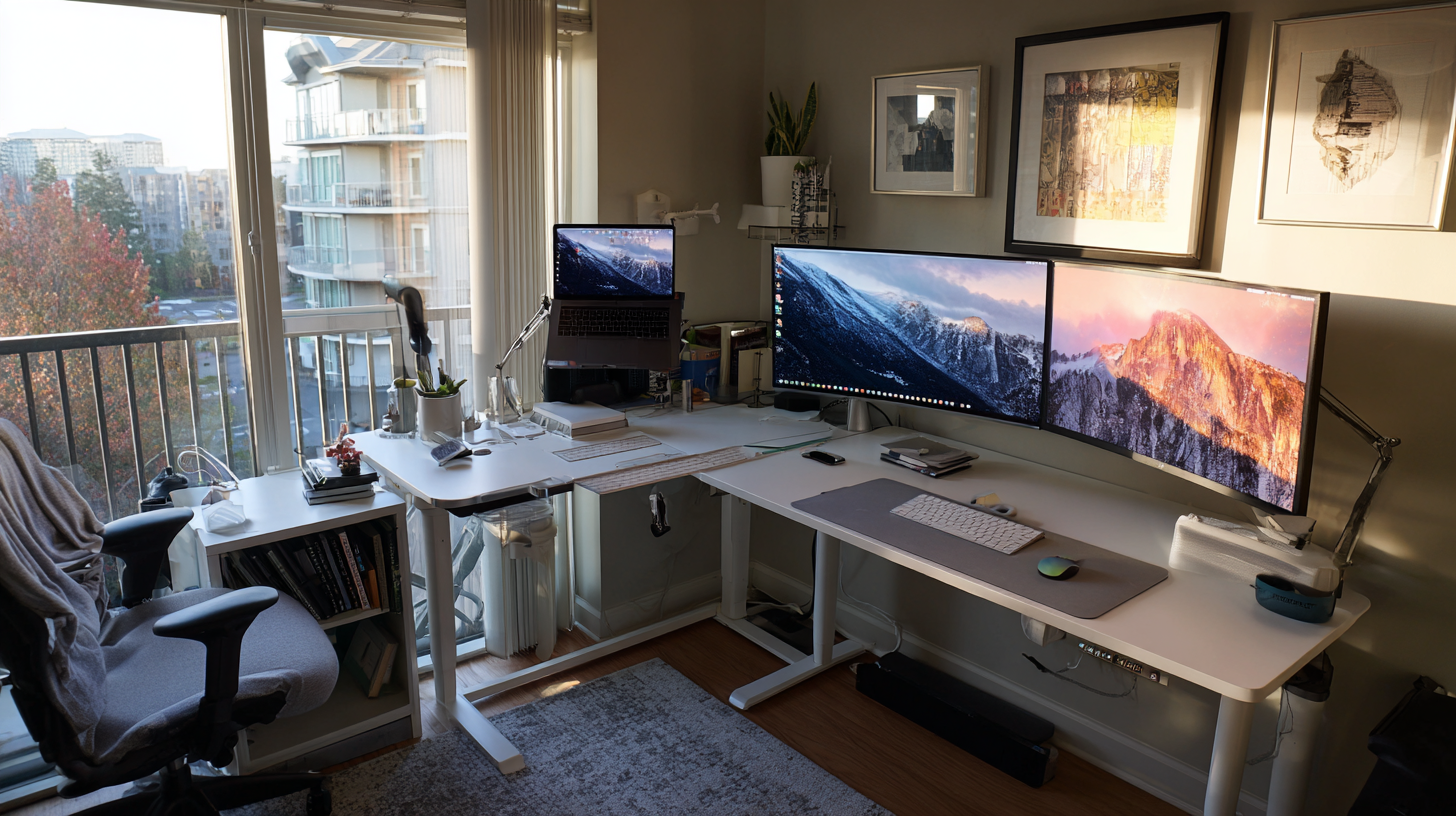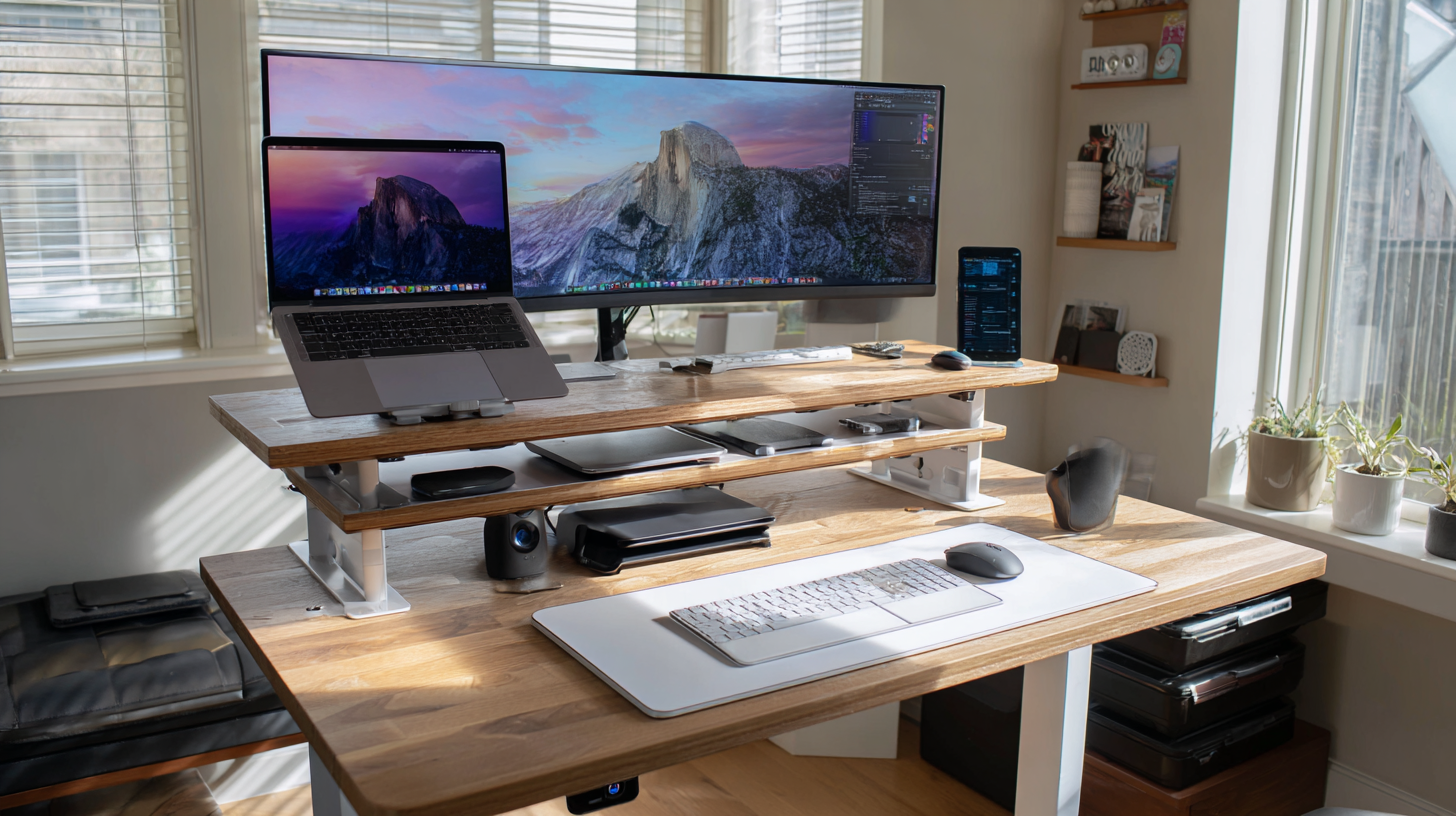In today's fast-paced work environment, the importance of creating a healthy workspace has never been more critical. One increasingly popular solution is the standing desk, which offers a practical way to combat the adverse effects of prolonged sitting. As studies reveal the link between sedentary behavior and various health issues such as obesity, cardiovascular disease, and even early mortality, transitioning to a standing desk can be a transformative step towards enhancing both physical well-being and productivity.

This guide will explore effective strategies for optimizing your workspace with a standing desk, ensuring you reap the benefits of increased energy, improved posture, and greater focus. By making small adjustments to your daily routine and workspace setup, you can create an environment that fosters better health and work performance.
When choosing the right standing desk for your workspace needs, it's essential to consider ergonomics, function, and aesthetic appeal. According to research, using a standing desk can significantly reduce the risk of health issues associated with prolonged sitting. For example, studies have shown that standing desks may lower blood sugar levels, reduce back pain, and even boost mood and energy levels. By investing in a well-designed standing desk, you can create a more dynamic work environment that promotes better health outcomes.
In addition to health benefits, the right standing desk should fit seamlessly into your workspace. Functional design is crucial; opting for desks with adjustable heights can cater to multiple users and varying task requirements. Moreover, contemporary models now combine style with substance, ensuring that your workspace remains visually appealing without sacrificing practicality. If space is at a premium, consider options like desk converters that transform any existing desk into a standing workstation, catering to both functional and aesthetic needs without overwhelming your office space.
This chart illustrates the percentage of employees who reported improvements in various health aspects after using a standing desk for a minimum of 6 months. The data reflects common health issues associated with prolonged sitting.
Setting up your standing desk correctly is crucial for promoting ergonomics and comfort in your workspace. First, ensure that your desk height is adjusted so that your elbows are at a 90-degree angle when typing. This will help prevent strain on your shoulders and wrists. The top of your monitor should be at eye level, about an arm's length away, to reduce neck strain. If necessary, use monitor risers or stack books to achieve the desired height. A good posture involves keeping your feet flat on the ground, with weight distributed evenly between them.
Incorporating accessories can further enhance comfort while using a standing desk. An anti-fatigue mat is beneficial for reducing discomfort in your legs and feet during long periods of standing. Additionally, consider using a footrest to encourage movement while you work, as changing your foot position can help reduce fatigue. Keeping your workspace organized and clutter-free also promotes better posture; ensure your essentials are within reach to minimize the need for stretching or awkward movements. By focusing on proper setup and incorporating supportive tools, you can create a healthy and comfortable standing desk environment.
Incorporating movement and breaks into your daily routine is essential for maintaining both physical and mental health, especially when using a standing desk. One effective strategy is to take frequent movement breaks throughout your workday. This could include short walks during phone calls or meetings, which not only keeps blood circulating but also enhances focus and productivity. Aim for a daily step count of between 7,000 and 10,000 steps, as research suggests this range is ideal for optimizing fitness and overall well-being.

Additionally, integrating simple movement breaks can make a significant difference. For instance, standing up to stretch or perform light exercises every hour helps combat the negative effects of prolonged sitting or standing. Even brief physical activities, like using stairs instead of elevators or taking short strolls during breaks, can greatly influence your energy levels and reduce fatigue. By designing your workspace to encourage these active habits, you can create a healthier environment that supports better health.
To maximize productivity while using a standing desk, it's essential to establish a comfortable work environment that promotes movement and focus. Adjusting the height of your desk to ensure that your elbows are at a 90-degree angle can help reduce strain on your back and shoulders. Additionally, using an anti-fatigue mat can provide cushioning for your feet, enabling you to stand for longer periods without discomfort. Pairing your standing desk with a footrest can also encourage subtle shifts in weight, preventing fatigue and maintaining energy levels throughout the day.
Incorporating movement into your workflow is pivotal for enhancing productivity. Schedule short breaks to stretch or walk around, which can rejuvenate your mind and body while fostering creativity. Using tools like a timer can help remind you to alternate between sitting and standing, striking the right balance for optimum efficiency. Moreover, consider organizing your workspace meticulously; keeping essential items within reach allows for smoother workflows, reducing time spent searching for resources. By creating a dynamic workspace that embraces both standing and movement, you can significantly boost your overall productivity and well-being.
| Workspace Aspect | Description | Health Benefits | Productivity Impact |
|---|---|---|---|
| Adjustable Height | Allows users to switch between sitting and standing. | Reduces back pain and promotes better posture. | Increases focus and minimizes fatigue. |
| Workspace Organization | Ensures all tools are within easy reach. | Minimizes distractions and enhances workflow. | Boosts efficiency and streamlines tasks. |
| Ergonomic Accessories | Includes mats, keyboard trays, and monitors. | Promotes comfort and reduces strain. | Enhances productivity by reducing discomfort. |
| Scheduled Breaks | Encourages regular standing and movement. | Improves circulation and decreases fatigue. | Improves overall work output and creativity. |
| Personalization | Customizes the desk setup to individual preference. | Ensures a comfortable work environment. | Fosters motivation and sustained engagement. |
Adapting to a standing desk is not just about the furniture; it requires a holistic approach to your work habits that can yield long-term health benefits. One significant change is to be mindful of your body position throughout the day. Pay attention to your posture; make adjustments to ensure that your back is straight and shoulders relaxed. Regularly check in with your body to avoid stiffness and discomfort.

Tips: Incorporate short stretches or micro-exercises, such as calf raises or desk push-ups, to keep your muscles active and engaged. This will reduce the fatigue that comes with prolonged standing and enhance circulation. Additionally, consider using supportive footwear or ergonomic insoles that help relieve pressure on your feet throughout the workday.
Research supports that spending less time seated can mitigate various health risks associated with a sedentary lifestyle. However, it's crucial to transition slowly and integrate standing into your routine gradually. Alternate between sitting and standing to give your body time to adapt, and utilize tools like anti-fatigue mats to provide additional comfort during your work hours.






